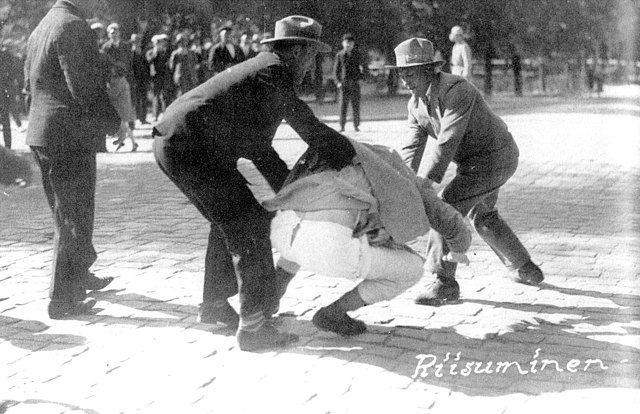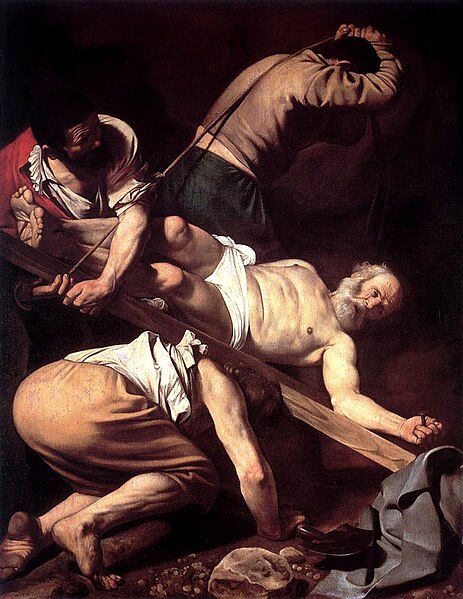Persecution is the systematic mistreatment of an individual or group by another individual or group. The most common forms are religious persecution, racism, and political persecution, though there is naturally some overlap between these terms. The inflicting of suffering, harassment, imprisonment, internment, fear or pain are all factors that may establish persecution, but not all suffering will necessarily establish persecution. The threshold of severity has been a source of much debate.
Members of the right-wing Lapua Movement assault a former Red officer and the publisher of the communist newspaper at the Vaasa riot on June 4, 1930, in Vaasa, Finland.
A Christian Dirce, by Henryk Siemiradzki. A Christian woman is martyred under Nero in this re-enactment of the myth of Dirce (painting by Henryk Siemiradzki, 1897, National Museum, Warsaw).
Qalb Loze: in June 2015, Druze were massacred there by the jihadist Nusra Front.
Kaunas pogrom in German-occupied Lithuania, June 1941
Religious persecution is the systematic mistreatment of an individual or a group of individuals as a response to their religious beliefs or affiliations or their lack thereof. The tendency of societies or groups within societies to alienate or repress different subcultures is a recurrent theme in human history. Moreover, because a person's religion frequently determines his or her sense of morality, worldview, self-image, attitudes towards others, and overall personal identity to a significant extent, religious differences can be significant cultural, personal, and social factors.
During Nazi rule, Jews were forced to wear yellow stars which identified them as such. Jews are an ethno-religious group and Nazi persecution of them was based on their race.
Protestant Bishop John Hooper was burned at the stake by Queen Mary I of England.
Saint Peter, an apostle of Jesus, was executed by the Romans.
The St. Bartholomew's Day massacre of French Protestants in 1572








